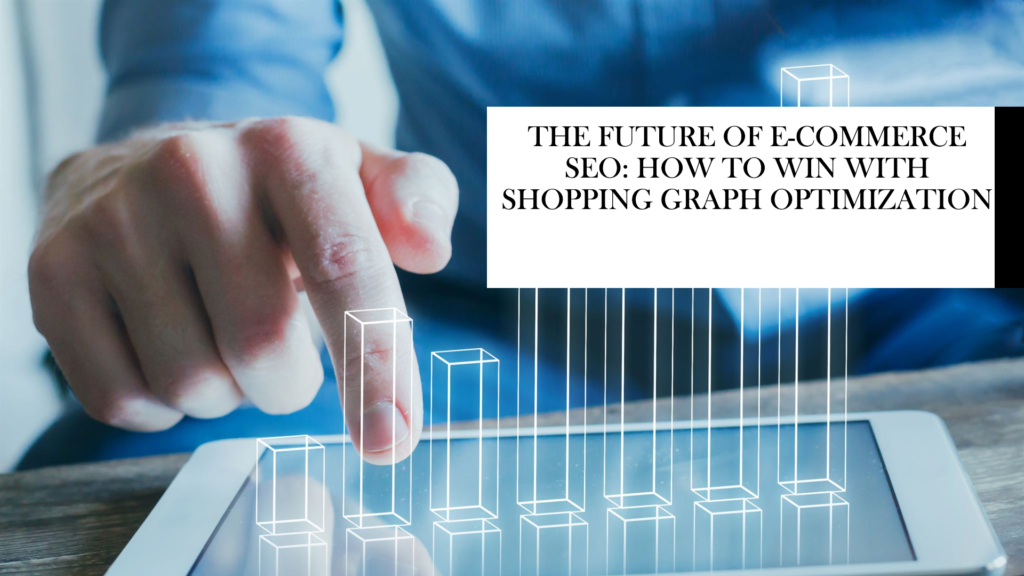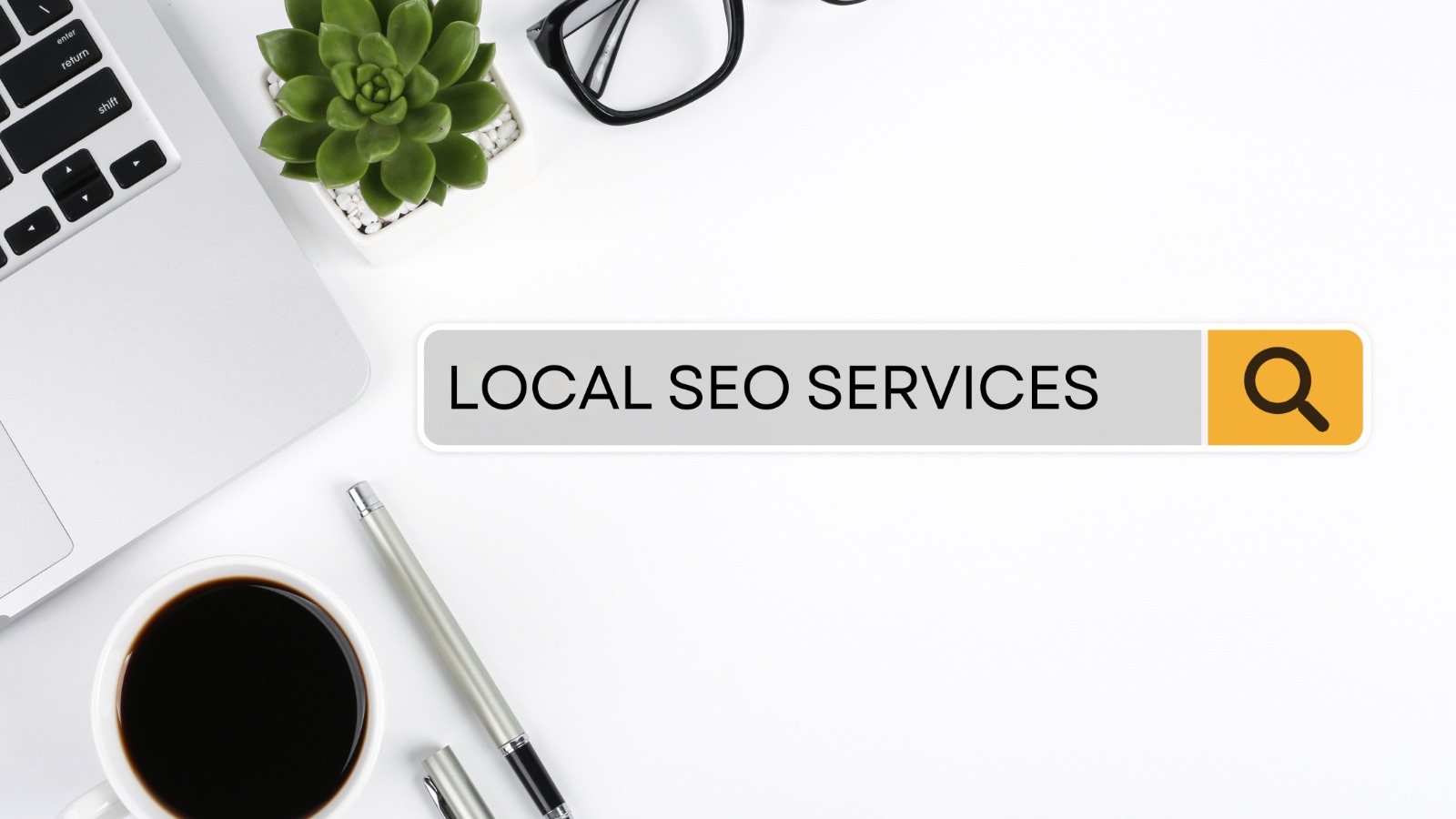With the rapid growth of online shopping, future of e-commerce SEO is becoming more important than ever. To stay ahead of the competition, businesses must adapt to the evolving landscape of digital marketing. Enter shopping graph optimization, the future of e-commerce SEO.
Shopping graph optimization revolves around understanding and utilizing the vast amount of data generated by shoppers’ behaviors, preferences, and purchasing patterns. By leveraging this data, businesses can improve their marketing strategies, target their audience more effectively, and drive higher conversions.
In this article, we will explore the concept of shopping graph optimization and discuss strategies to help businesses win in the competitive e-commerce market. From leveraging artificial intelligence and machine learning algorithms to analyze and interpret shopping data, to optimizing product listings and website content, we’ll cover the tactics that can give your brand a competitive edge.
Join us as we unveil the future of e-commerce SEO and discover how shopping graph optimization can revolutionize your online marketing efforts. Get ready to take your e-commerce game to the next level and dominate the digital landscape.
Table of Contents
ToggleUnderstanding The Shopping Graph And Its Impact On E-commerce SEO
The shopping graph is a complex network of data that represents the relationships between shoppers, products, and their interactions. It encompasses various factors such as search queries, browsing history, purchase history, and social interactions. By analyzing this data, businesses can gain valuable insights into consumer behavior and preferences.
To optimize e-commerce SEO using the shopping graph, it is crucial to understand how it impacts search engine algorithms. Search engines like Google and Bing are constantly evolving to provide users with the most relevant and personalized search results. The shopping graph plays a vital role in shaping these algorithms by helping search engines understand user intent and deliver tailored results.
By leveraging the shopping graph, businesses can improve their search engine rankings and visibility. When search engines understand the context and relevance of your products, they are more likely to display them to users searching for related items. This can significantly increase organic traffic and drive more qualified leads to your e-commerce website.
The Importance of Shopping Graph Optimization
Shopping graph optimization is crucial for e-commerce businesses looking to thrive in the competitive online market. By harnessing the power of the shopping graph, businesses can gain a competitive edge and boost their online visibility.
One of the key benefits of shopping graph optimization is the ability to target your audience more effectively. By analyzing the shopping graph data, businesses can identify their target audience’s preferences, interests, and purchasing patterns. This enables them to create targeted marketing campaigns, personalized product recommendations, and tailored content that resonate with their audience. As a result, businesses can increase customer engagement, drive higher conversions, and build long-term customer loyalty.
Another important aspect of shopping graph optimization is the ability to optimize your marketing budget. By understanding your audience’s preferences and behaviors, you can allocate your resources more efficiently. Instead of wasting your budget on generic marketing campaigns, you can invest in strategies that are more likely to resonate with your target audience. This can lead to higher ROI and overall marketing success.
Key Elements of Shopping Graph Optimization
Shopping graph optimization consists of various elements that work together to improve your e-commerce SEO and online marketing efforts. Let’s explore some of the key elements involved in shopping graph optimization.
- Data collection and analysis
The first step in shopping graph optimization is collecting and analyzing data. This includes gathering data from various sources such as website analytics, customer surveys, social media platforms, and customer interactions. By analyzing this data, businesses can gain insights into customer preferences, behaviors, and purchasing patterns. This information can then be used to optimize product listings, marketing campaigns, and website content.
- Artificial intelligence and machine learning
Artificial intelligence (AI) and machine learning (ML) play a crucial role in shopping graph optimization. These technologies enable businesses to analyze and interpret large amounts of data quickly and accurately. AI and ML algorithms can identify patterns, predict customer behavior, and make data-driven recommendations. By leveraging AI and ML, businesses can optimize their marketing strategies, improve customer targeting, and drive higher conversions.
- Content optimization
Content optimization is another key element of shopping graph optimization. By optimizing your product listings, website content, and blog articles, you can improve your search engine rankings and attract more organic traffic. This includes using relevant keywords, creating compelling product descriptions, and optimizing your website structure for better user experience. Additionally, user-generated content such as reviews and ratings can also contribute to shopping graph optimization by providing social proof and enhancing customer trust.
How To Optimize Your Product Listings For The Shopping Graph
Optimizing your product listings is essential for shopping graph optimization. When your products are well-optimized, they are more likely to appear in relevant search results and attract potential customers. Here are some strategies to optimize your product listings for the shopping graph:
- Conduct keyword research
Keyword research is the foundation of effective product listing optimization. By identifying the keywords that your target audience is using to search for products, you can optimize your listings accordingly. Use keyword research tools to find relevant keywords with high search volumes and low competition. Incorporate these keywords into your product titles, descriptions, and tags to improve your search engine rankings.
- Create compelling product descriptions
Product descriptions play a crucial role in convincing customers to make a purchase. Write clear, concise, and persuasive descriptions that highlight the unique features and benefits of your products. Use descriptive language, bullet points, and images to convey the value proposition effectively. Additionally, make sure to include relevant keywords naturally within the description to improve your search visibility.
- Optimize product images
High-quality product images can significantly impact customer engagement and conversion rates. Optimize your product images by using high-resolution photos, multiple angles, and zoom features. Ensure that your images are properly compressed for faster loading times, as slow-loading images can negatively affect user experience. Additionally, include relevant alt text and file names for better search engine optimization.
Leveraging User-Generated Content For Shopping Graph Optimization
User-generated content (UGC) can be a powerful tool for shopping graph optimization. UGC includes customer reviews, ratings, testimonials, and social media mentions. Here are some strategies to leverage UGC for shopping graph optimization:
- Encourage customer reviews and ratings
Positive customer reviews and ratings can significantly impact your search engine rankings and customer trust. Encourage your customers to leave reviews and ratings by offering incentives, sending follow-up emails, or providing a seamless review process on your website. Display these reviews prominently on your product pages to provide social proof and enhance customer confidence in your brand.
- Engage with customers on social media
Social media platforms provide an excellent opportunity to engage with your customers and collect valuable UGC. Encourage your customers to tag your brand in their social media posts and share their experiences with your products. Respond to their comments, address their concerns, and show appreciation for their support. By actively engaging with your customers on social media, you can build a loyal community and generate more UGC.
- Incorporate UGC into your marketing campaigns
UGC can be a valuable asset for your marketing campaigns. Incorporate customer testimonials, reviews, and social media mentions into your email marketing, social media ads, and website content. This not only provides social proof but also creates a sense of authenticity and trust. By showcasing real customer experiences, you can attract more potential customers and increase conversions.
The Role Of Visual Search In E-commerce SEO
Visual search is an emerging technology that is revolutionizing e-commerce SEO. Instead of using text-based queries, users can now search for products using images. Visual search technology analyzes the features and characteristics of an image and provides relevant search results.
The role of visual search in e-commerce SEO is significant. It allows users to find products they are looking for more quickly and easily, leading to improved user experience and higher customer satisfaction. By optimizing your product images for visual search, you can increase your chances of appearing in relevant search results and attract more potential customers.
To optimize your product images for visual search, make sure they are high-quality, properly tagged, and include relevant alt text. Additionally, consider implementing schema markup to provide search engines with more information about your products.
The Impact Of Voice Search On Shopping Graph Optimization
Voice search is another emerging trend that has a significant impact on shopping graph optimization. With the increasing popularity of voice assistants like Siri, Alexa, and Google Assistant, more users are using voice commands to search for products and make purchases.
To optimize your e-commerce SEO for voice search, consider the following strategies:
- Focus on conversational keywords
Voice search queries are often more conversational and longer than text-based queries. Incorporate long-tail keywords and natural language into your content to optimize for voice search. Think about the questions your target audience might ask and provide relevant answers in your content.
- Optimize for local search
Voice search is often used for local queries such as “near me” or “best place to buy.” Optimize your website and product listings for local search by including location-specific keywords and providing accurate business information.
- Improve website loading speed
Voice search users expect fast and accurate results. Optimize your website loading speed to ensure a smooth user experience. Compress images, minify code, and leverage caching to improve your website’s performance.
The Future Of E-commerce SEO: Predictions And Trends
The future of e-commerce SEO is bright and full of exciting possibilities. Here are some predictions and trends that we can expect in the coming years:
- Personalization and customization
As the shopping graph becomes more sophisticated, personalization and customization will play a crucial role in e-commerce SEO. Businesses will need to create personalized experiences for their customers, tailored to their preferences and behaviors. This includes personalized product recommendations, customized email marketing, and unique website experiences.
- Augmented reality (AR) and virtual reality (VR)
AR and VR technologies have the potential to transform the e-commerce industry. With AR and VR, customers can try on clothes, visualize furniture in their homes, or virtually experience products before making a purchase. This immersive shopping experience can significantly impact customer engagement and conversion rates.
- Voice commerce
Voice commerce, also known as v-commerce, is expected to become more prevalent in the future. With voice assistants becoming more intelligent and capable, users can make purchases using voice commands. Businesses will need to optimize their e-commerce platforms for voice commerce and provide seamless voice shopping experiences.
Tools And Resources For Successful Shopping Graph Optimization
To succeed in shopping graph optimization, businesses can leverage various tools and resources. Here are some essential tools and resources that can help you optimize your e-commerce SEO:
- Google Analytics
Google Analytics is a powerful tool for analyzing website traffic and user behavior. It provides valuable insights into your audience, their preferences, and their purchasing patterns. Use Google Analytics to track your e-commerce conversions, monitor your website performance, and identify areas for improvement.
- Keyword research tools
Keyword research tools like SEMrush, Ahrefs, and Google Keyword Planner can help you identify relevant keywords for your product listings and content optimization. These tools provide data on search volumes, competition, and keyword trends, allowing you to make data-driven decisions.
- Image optimization tools
Image optimization tools like TinyPNG, Kraken.io, and ImageOptim can help you compress and optimize your product images for better performance and faster loading times. These tools can significantly improve your website’s user experience and search engine rankings.
Conclusion: Embracing The Future Of E-commerce SEO
In conclusion, shopping graph optimization is the future of e-commerce SEO. By understanding and leveraging the vast amount of data generated by shoppers’ behaviors, preferences, and purchasing patterns, businesses can gain a competitive edge and drive higher conversions. From optimizing product listings and leveraging user-generated content to embracing emerging technologies like visual search and voice search, businesses can adapt to the evolving digital landscape and dominate the e-commerce market.
To succeed in shopping graph optimization, businesses must embrace data-driven strategies, leverage AI and ML technologies, and continuously adapt to changing consumer behaviors and preferences. By staying ahead of the curve and implementing the tactics discussed in this article, you can revolutionize your online marketing efforts and propel your e-commerce brand to new heights. Embrace the future of e-commerce SEO and take your business to the next level.
FAQs: Shopping Graph Optimization in E-commerce SEO
Q1: What is Shopping Graph Optimization?
Ans. Shopping graph optimization is the process of leveraging the vast amount of data generated by shoppers’ behaviors, preferences, and purchasing patterns to improve marketing strategies, target audiences more effectively, and drive higher conversions in e-commerce.
Q2: How does the shopping graph impact search engine algorithms?
Ans. The shopping graph helps search engines understand user intent and deliver personalized search results. By analyzing data such as search queries, browsing history, and purchase history, search engines can provide more relevant and tailored search results, improving user experience and increasing visibility for optimized products.
Q3: Why is shopping graph optimization important for e-commerce businesses?
Ans. Shopping graph optimization is crucial because it enables businesses to gain valuable insights into consumer behavior, target their audience more effectively, optimize marketing budgets, and ultimately drive higher conversions and build long-term customer loyalty.
Q4: What role does artificial intelligence (AI) play in shopping graph optimization?
Ans. AI and machine learning (ML) play a vital role in shopping graph optimization by quickly analyzing and interpreting large amounts of data. AI and ML algorithms can identify patterns, predict customer behavior, and make data-driven recommendations, helping businesses optimize their marketing strategies and improve customer targeting.
Q5: How can businesses optimize their product listings for the shopping graph?
Ans. To optimize product listings, businesses should conduct keyword research, create compelling product descriptions, and optimize product images. This involves using relevant keywords, highlighting unique product features, ensuring high-quality images, and providing relevant alt text for better search engine optimization.
Q6: What is the importance of user-generated content (UGC) in shopping graph optimization?
Ans. UGC, such as customer reviews, ratings, and social media mentions, provides social proof and enhances customer trust. Encouraging and leveraging UGC can improve search engine rankings, increase customer engagement, and drive higher conversions by showcasing real customer experiences.
Q7: How does visual search technology affect e-commerce SEO?
Ans. Visual search allows users to search for products using images, leading to improved user experience and higher customer satisfaction. By optimizing product images for visual search, businesses can increase their chances of appearing in relevant search results and attract more potential customers.
Q8: What strategies can businesses use to optimize for voice search?
Ans. To optimize for voice search, businesses should focus on conversational keywords, optimize for local search by including location-specific keywords, and improve website loading speed for a smooth user experience. This ensures better alignment with the natural language used in voice queries and local search intent.
Q9: What future trends are expected in e-commerce SEO?
Ans. Future trends in e-commerce SEO include increased personalization and customization, the integration of augmented reality (AR) and virtual reality (VR) technologies, and the rise of voice commerce (v-commerce). These trends will shape how businesses create personalized shopping experiences, engage customers, and facilitate purchases through voice commands.
Q10: What tools can businesses use for successful shopping graph optimization?
Ans. Essential tools for shopping graph optimization include Google Analytics for website traffic analysis, keyword research tools like SEMrush and Ahrefs, and image optimization tools like TinyPNG and Kraken.io. These tools help businesses gain insights, optimize content, and improve website performance for better e-commerce SEO results.
















Select your comment provider from settings.